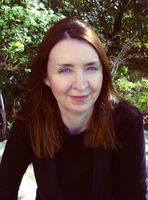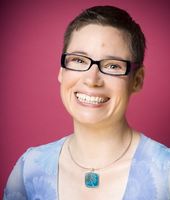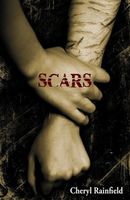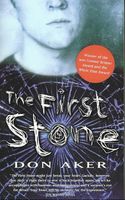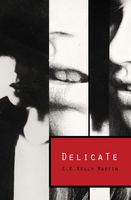Kid Lit Can, with Susan Hughes: Sex, and Drugs, and Rock and Roll: Writing Edgy Ya (Part 2)
By Susan Hughes & Submitted by kateburgess
They’ve written about it all: drugs, gambling, sexual harassment, suicide, sexual abuse, physical abuse, cutting, death, sex, drugs, body image issues, bullying, STDs, abduction...Today I continue my conversation with YA authors C.K. Kelly Martin, Don Aker and Cheryl Rainfield.
C. K. Kelly Martin (www.ckkellymartin.com) began writing her first novel in a Dublin flat and finished it in a Toronto suburb. She currently resides in Southern Ontario and is the author of eight young adult novels.
Don Aker is the award-winning author of 20 books, among them several bestselling novels for teens. His most recent, Delusion Road, has been nominated for the 2016 White Pine Award. His website is www.donaker.com.
Cheryl Rainfield is the author of several YA novels, including the award-winning Scars, a novel about a queer teen sexual abuse survivor who uses self-harm to cope and Hunted, a novel about a teen telepath in a world where any paranormal power is illegal. Cheryl is a lesbian feminist, incest and ritual abuse survivor and an avid reader and writer. Her website is www.cherylrainfield.com.
Susan Hughes:
Can you tell us something about your writing process?
C. K. Kelly Martin:
At the start I make a lot of notes about the characters and plotlines. I normally have some kind of trajectory in mind, but I’m usually fuzzy on the details. When I jot down an outline it’s really vague – a sentence or two per chapter which is subject to change when I get to know the characters better during the writing process.
In recent years I’ve found that I can only outline up to a certain point and then have to sit back and see where I’m taken. I’m very slow at producing first drafts, editing as I go, so once I reach the end, the manuscript is mostly finished. Then I generally give it to one or two people (my husband is always one of these) before sending off to my agent or submitting to editors.
Don Aker:
As I mentioned earlier, every story I’ve ever written has grown out of something I wondered about, which gave me a focus. For me, though, the strongest stories are never about issues or events but, rather, how characters are affected by those issues or events. Before I can begin writing any story—whether it’s short fiction or a novel—I have to answer three questions. First, who is my main character and what do I know about that person? I spend a lot of time getting to know him or her, and in the process of establishing a strong sense of that individual, I’m usually able to answer my second question—what does my main character want more than anything? If I can’t answer this, it’s because I don’t know my character well enough, so I have to keep circling around that person, generating a far better understanding of him or her. Once I discover what my main character wants more than anything, I get to answer the “fun” question—how do I keep him or her from getting it (at least for a little while)?
Your CanLit News
Subscribe to Open Book’s newsletter to get local book events, literary content, writing tips, and more in your inbox
How many drafts do I write before I feel a manuscript is ready to submit to a publisher? Because I’m constantly revising as I write, my “first” draft is probably closer to my thirtieth. Once I have a completed initial manuscript, I set aside time to read the entire story aloud, which helps me identify problems with repetition, phrasing, timing, etc. Then I give it to my wife, who is always my very first reader. After we’ve talked about it, I make changes that address her comments, and then I set the manuscript aside for a while so I can return to it later with fresh eyes, making further changes. By that time, the story is as good as I can possibly make it, so I send it to my agent, who then submits it to publishers.
And once the editing process begins, the manuscript goes through further drafts before both my editor and I are pleased with it.
Cheryl Rainfield:
I write and edit all my work by hand, and then type everything in. I find I’m more connected to my voice and my creativity by writing that way. I never used to plan out a novel; I was afraid I’d lose my creativity. But it meant I did far more rewrites; I did more than fifty edits of Scars before it was published—though it was my first novel.
I now plan out every novel using detailed notes from The Anatomy of Story by John Truby. My edits can go anywhere from 12 to 20 edits before I get a contract or feel it’s publishable. When I write a first draft I usually just have the action, conflict, emotion and dialogue; I have to go back to layer in setting and sensory details, and so on. I try to always have other writers give me feedback before submitting my work. Good feedback is invaluable.
SH:
What do you enjoy most—and dislike most—about writing for teens?
CKKM:
I love the immediacy. Emotions feel heightened. So many things are happening for the first time. People are figuring out who they are. They’re growing and being challenged. There’s so much potential.
I guess the only thing I dislike about writing for teens would be the flipside of what I like. With YA the timeframe of a story is usually limited and the writing has to be super tight too. Sometimes I’d appreciate a little more room.
DA:
I love how passionately teens respond to characters and stories. Teens tell you exactly what they think, good or bad. The only thing I dislike about writing for teens is the misperception that many of them share about filmmaking. I’ve lost track of the number of times teens have asked me when I’m going to make movies of The First Stone or The Fifth Rule or The Space Between or Running on Empty or Delusion Road or.... I have no say in what books get chosen by movie producers to make into films. I wish I did but, sadly, that isn’t the case.
CR:
I love writing for teens; it’s where I feel my voice most naturally is—with intense emotion. I love that I have to leave out the boring bits such as long passages of description, and to make sure that I have character growth and change. And the reader letters I receive, letting me know that my books helped them to stop cutting; helped them feel like they can survive the hard times, talk to someone for the first time about being queer, their sexual abuse, or self harm, or even keep from killing themselves—that is the most rewarding thing that helps fuel me onward.
SH:
What’s the most challenging aspect about writing for teens? Oh, and what’s the most challenging aspect about publishing?
CKKM:
I’ve always written for young people. I have a middle grade manuscript about to go out on submission, and a few years ago I self-published a book with a 20 year old main character—but that still only gives an age range of 12 – 20 so I have nothing to compare to. But like a lot of writers in this difficult publishing environment, the most challenging things for me are to be able to find a good home for my books, find a readership and to make some kind of decent living from writing. That seems like an exceptionally tall order these days!
DA:
I don’t think there’s anything more challenging about writing for teens than for any other audience. For me, the biggest challenge is always how to begin. There’s nothing more daunting than that first blank page. Facing it, I’m always convinced that I can’t possibly write another novel but, fortunately, my characters show me how.
Regarding the most challenging aspect about publishing, I would have to say it’s the movement within the publishing world. In recent years, publishing houses have undergone many pressures resulting in their employees frequently changing jobs. This means that enjoying a long-term relationship with a particular editor is less likely to happen.
CR:
I love the writing and editing process—I feel most alive when I’m writing or editing—but because I write from my own trauma, it can be very draining and sometimes painful. Every edit I do, I relive the trauma I’m writing about, though eventually it gets easier and I work through more. Before I was published, I thought that all I needed to do was write my novels. But once published I found I have to do a lot of book promotion. I enjoy online book promotion, but I find public speaking hard. I am an introvert, and I also grew up enduring daily torture, rape and threats from my parents who were part of a cult, and other abusers. They told me they would kill me if I talked, and since I saw children be murdered, I was terrified to speak. Writing was my way out of speaking, and it is now my voice—but public speaking, even though I’ve done it many times, still has me sweating and my hands shaking, even though I connect with the audience and they respond.
SH:
And finally, please share some tips for writing YA.
CKKM:
1. Begin at a point that makes your reader feel the need to turn the page, a point where something crucial has just changed. That doesn’t necessarily have to be as intense as it sounds. If you’re writing a humorous novel it could be that your main character just discovers their favourite lunch item is off the menu at the school cafeteria which sends them into a character-revealing comedic diatribe. The thing is, you want to hook someone on your character(s) and/or their circumstance right away.
2. Read your chapters out loud so that you can hear the flow of language. Clunky and imprecise sentences will stand out more that way than if your eyes are just flying over them.
3. Write for yourself, not the market which is a tetchy, fickle thing. Publishing is so tough and it’s easier to stand behind your books when they have your whole heart.
DA:
1. My first tip is a no-brainer—read, read, read, especially the kinds of things that you’d most like to write yourself. Just as an apprentice works alongside a trained carpenter to learn the construction trade, reading allows you to see how successful writers tell their stories. If you’re not reading every day, you’re not learning your craft.
2. Keep a writer’s notebook (electronic or otherwise) in which you record observations and details that you can use in your own writing. It makes facing a blank page infinitely easier.
3. Join a writer’s group. If there isn’t one in your area, form your own. It’s extremely helpful to receive feedback and encouragement from others who are equally committed to improving as writers.
4. Write about what you know. I still recall vividly many moments during my teen years that had a tremendous impact on me. Many of those moments have found their way into my novels. As well, recognize the value in the moments you experience every day. They can be the seeds of whatever you might choose to write.
CR:
1. Write about something you deeply care about, something that matters a lot to you or has greatly impacted you.
2. Write as emotionally honestly as you can; readers will respond to that.
3. Read a lot of YA novels if you plan to write YA; it will help you get a sense of voice, style and so on, and help feed your own creativity.
The views expressed by Open Book columnists are those held by the authors and do not necessarily reflect the views of Open Book.
Susan Hughes is an award-winning author of children's books — both fiction and non-fiction — including The Island Horse, Off to Class, Case Closed?, No Girls Allowed and Earth to Audrey. She is also an editor, journalist and manuscript evaluator. Susan lives in Toronto. Visit her website, www.susanhughes.ca.
